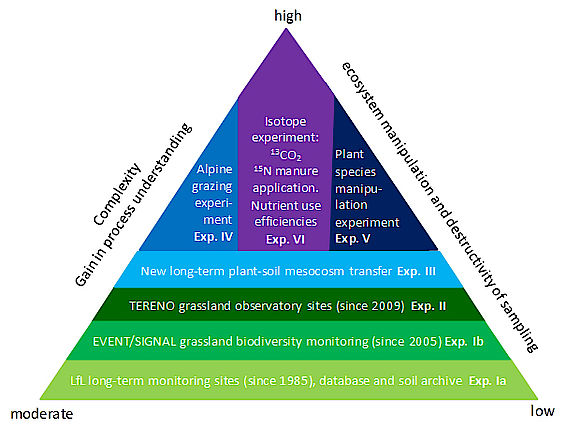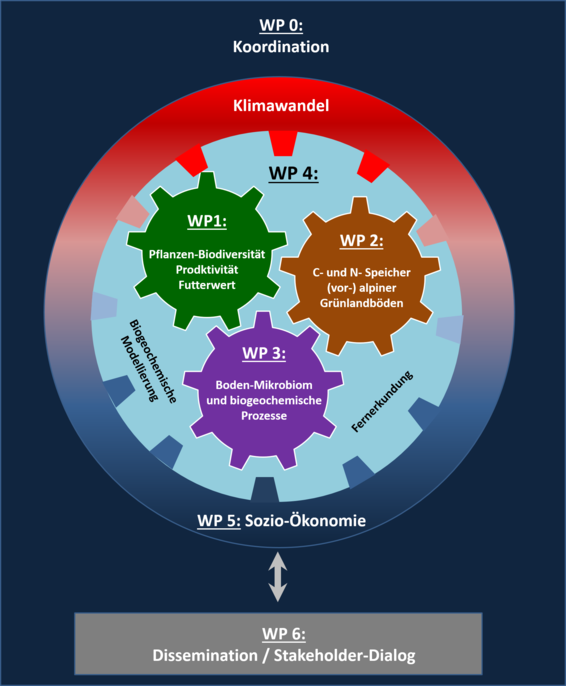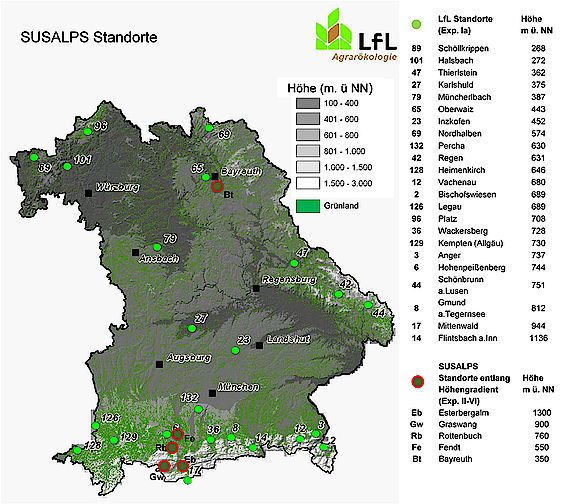The aim of the SUSALPS project is to improve our knowledge on the effects of current and future climate and management on ecosystem functions performed by grasslands. In the process, the general framework of the socio-economy of the specific geographic region will be considered. Based on this improved knowledge, sustainable management options for grasslands in the alps and the foothills of the alps will be developed. These management options will be especially designed to support the climate protection function of grassland soils.
Project
Grassland ecosystems are widely spread in the alps and the foothills of the alps of southern Germany and cover an area of more than one million hectares. From an economical point of view, grasslands are precious as they provide fodder for dairy and cattle farming. In addition to their economic value, they fulfill important ecosystem functions such as the storage of carbon and nitrogen, water retention, protection against erosion and biodiviersity. However, changes in climate, land use and grassland managenent jeopardize the multiple functions provided by grasslands.
The SUSALPS project is organized in six interrelated work packages (WP) which result from the project aims. The work packages
WP1 Plant biodiversity, productivity and fodder quality
WP2 Carbon and nitrogen storage of grassland soils
WP3 Soil microbiome and biogeochemical processes
are based on experimental work, which forms the basis for the development of models in the work packages
WP4 Biogeochemical modeling and remote sensing
WP5 Socio-Economics
Since the 2nd project phase, remote sensing is an additional component of WP4 to provide spatial data for regional modelling. WP1 through WP5 are supported and disseminated by WP0 (Coordination) und WP6 (Dissemination and Stakeholder Dialog).
The models developed in WP4 and WP5 will be merged into a bioeconomy model in WP6. This bioeconomy model will be the backbone of a user friendly decision support tool aiming at sustainable management of grassland by local farmers.
The experimental work in WP1 through WP3 on the effects of changes in climate and management on both plant and microbial diversity, nutrient use efficiency, biomass productivity, fodder quality, carbon sequestration, greenhouse gas emission and nutrient leaching takes place at various sites characterized by different elevation and climate. Thus, the effect of changing climate is investigated using a climate change analogy achieved by soil translocations.



